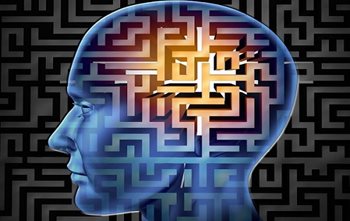
Dementia Care Reducing Behavioral Symptoms with Therapeutic Touch
The devastating impact of Alzheimer's and related dementias on our American society is steadily growing. The Alzheimer's Association puts the number of people currently diagnosed with Alzheimer's (the most prevalent dementia) at 4.5 million, double that in 1980. As life expectancy increases, so does the rate of those afflicted -- 1 of 10 by age 65, 1 of 2 by age 85. In addition to the staggering national cost of care at $100 billion a year,1 there is the personal cost for both patient and caregiver.
Whether provided in a specialized facility or at home, care for the dementia patient is a challenge. Neurologist Barry Reisberg coined the term "retrogenesis," meaning "back to birth," to describe the process of Alzheimer's disease. Through research, he determined that destruction of the brain occurs in a systematic reverse of the stages of brain development. This is why problems in short-term memory (stored in the hippocampus, the last symptom to develop) are the first to surface while other basic functions, such as physical movement and autonomic regulation, remain intact longer.2 By later stages of the disease, the person has lost much of the brain's filing system. What remains is a child-like state of helplessness, frequently accompanied by behavioral and emotional symptoms. As the inability to communicate, reason, remember, and perform diminishes, the Alzheimer's patient becomes more sensitive and vulnerable to change, exhibiting signs of agitation, distress, paranoia, and anger. This can turn a simple mealtime into a battlefield or bath time into a major war if handled inappropriately. Agitation can also spur patients to wander endlessly, searching for some lost fragment of their past -- a home or relationship long gone, but still in their memory bank -- anything that assuages their fear and confusion.
These behaviors, and others equally challenging, impact quality of life for both caregiver and recipient. While there are pharmaceuticals targeted at decreasing these behaviors, their efficacy is questionable. Side effects are a major concern, especially in the elderly whose body systems may be frail or who are taking drugs for other medical problems. The use of non-pharmacologic interventions, such as behavioral approaches that evoke a relaxation response, are increasingly recommended by dementia experts for implementation in care facilities and at home.
Studies of alternative approaches to lessen dementia behaviors have trickled in over the years, gaining momentum during the past decade. In one of the more recent, involving use of therapeutic touch, Woods et al. (2005) point to review findings from the Quality Standards Subcommittee of the American Academy of Neurology which indicate that "non-pharmacological interventions showing the most consistency and promise involve sensory." In addition to massage/touch therapies, these include music, light, pet therapy, and video/audio tape of family.
To read the entire article from the original posting on massagetherapy.com- please click here.

